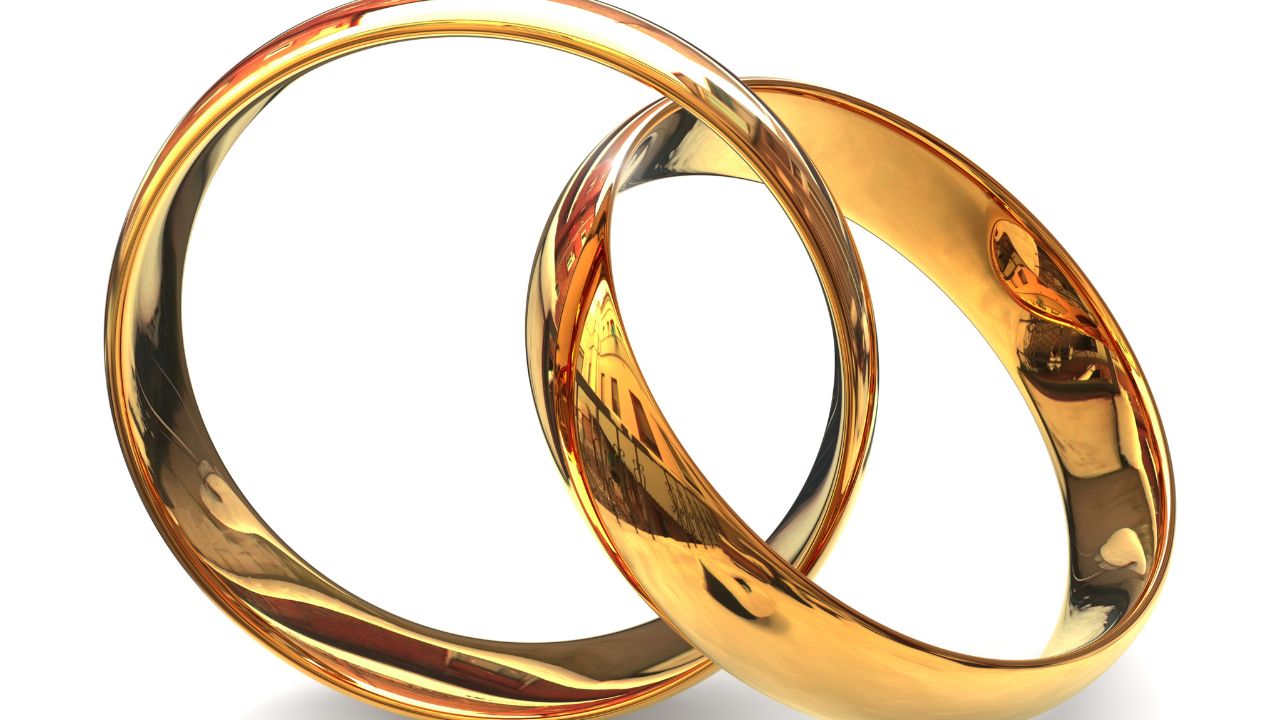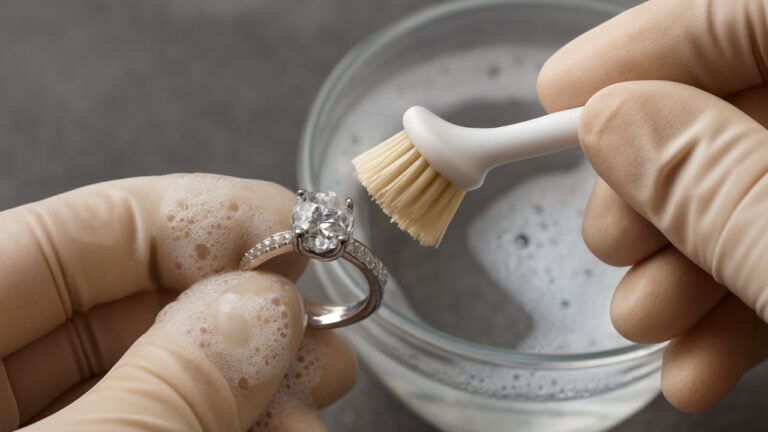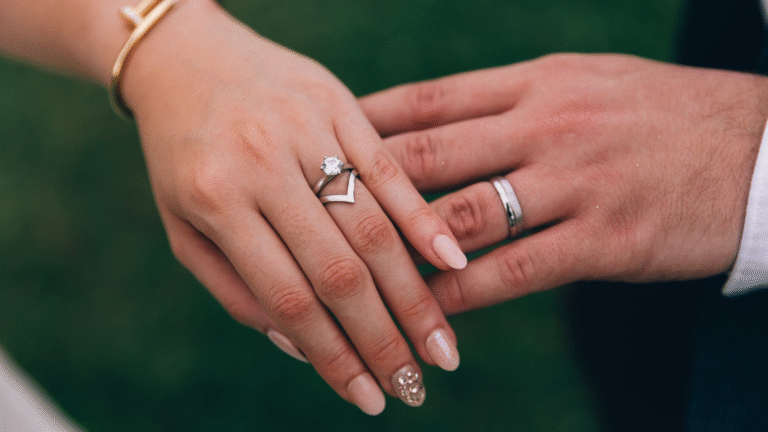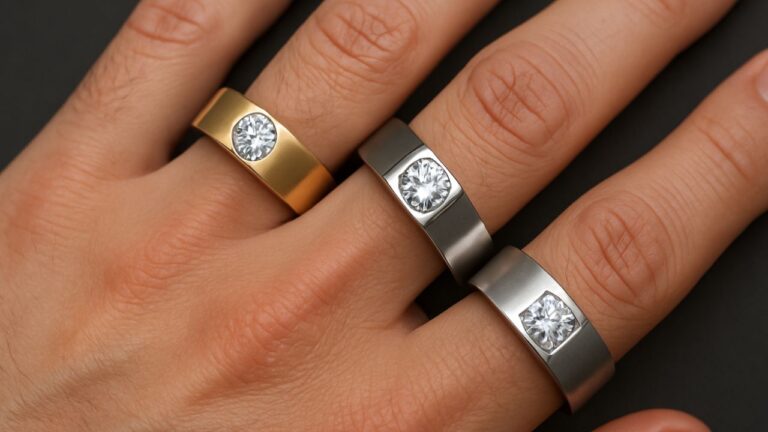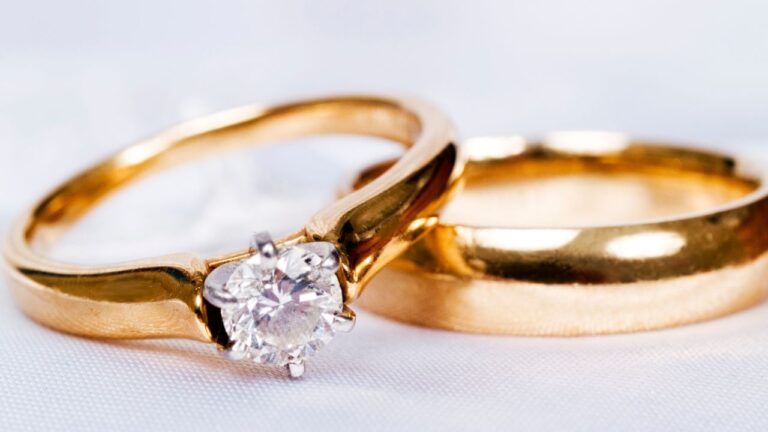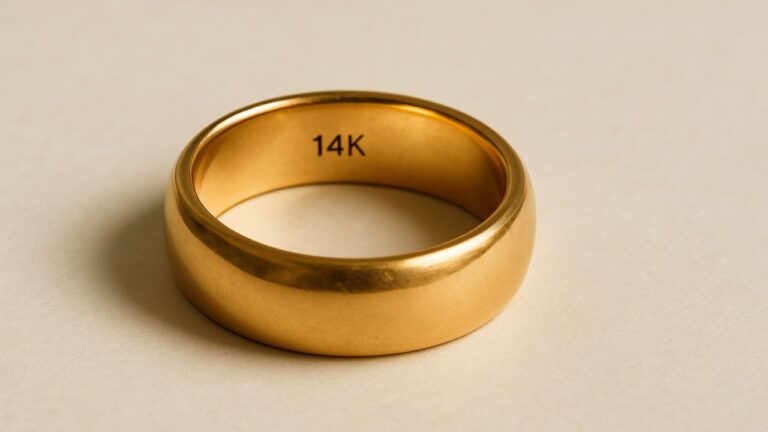Is Your Gold Ring Real or Fake? 8 Easy Ways to Find Out
What Is Real Gold?

Real gold is a naturally occurring precious metal known for its softness, malleability, and rich yellow appearance. It can be found in its pure metallic form in nature and has been used for centuries in jewelry, art, and currency. Because of its soft texture, pure gold can be easily shaped, stretched, or molded without breaking, making it perfect for creating intricate designs. However, due to this softness, it is often combined with other metals like copper or silver to enhance its strength and durability for everyday use.
Another key characteristic of real gold is its resistance to tarnish and corrosion. Unlike many other metals, gold does not react with air or moisture, allowing it to maintain its shine and beauty over time with very little maintenance. This lasting quality makes gold highly desirable for jewelry and long-term investment. Gold is measured in karats, a unit that indicates its level of purity, with higher numbers representing a higher percentage of pure gold in the alloy.
How to Know if a Ring is Real Gold?
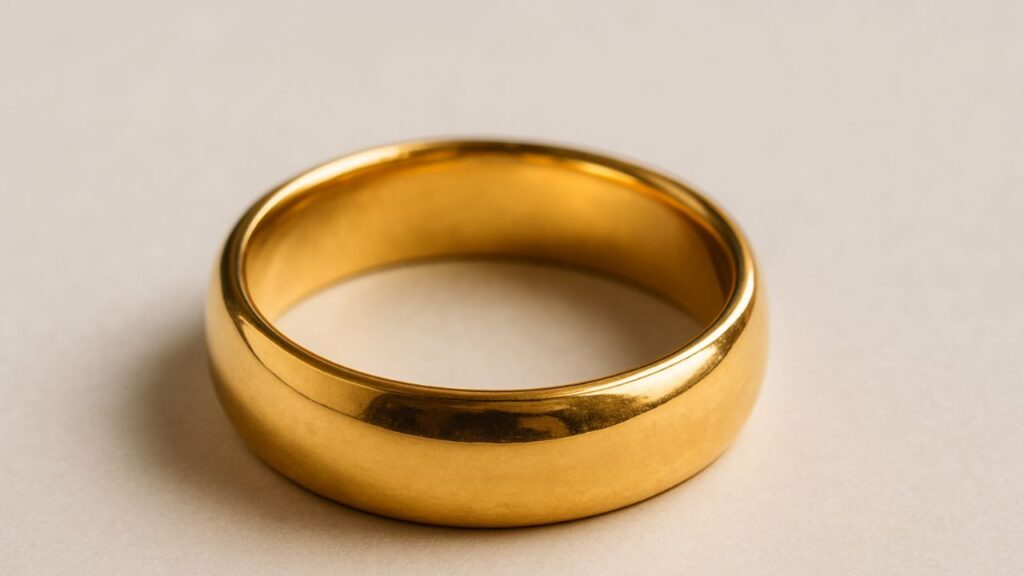
If you’re trying to figure out whether a ring is real gold, there are a few simple ways to check at home before going to a jeweler. Real gold has specific signs that help you tell it apart from fake or gold-plated jewelry. One of the first things to look for is a stamp or hallmark on the inside of the ring. This small marking usually shows the gold’s purity and helps confirm if it’s genuine.
Here are some common hallmarks and what they mean:
- 24K – 100% pure gold (very soft and bright yellow)
- 18K – 75% gold mixed with other metals
- 14K – 58.5% gold, durable and popular in jewelry
- 10K – 41.7% gold, more affordable and long-lasting
- You might also see stamps like 750 (18K), 585 (14K), or 417 (10K), which are simply different numbering systems for the same purity levels
Other simple tests include the magnet test — real gold is not magnetic, so if your ring sticks to a magnet, it’s likely not real. You can also try the skin test: wear the ring for a day and see if it leaves a green or black mark on your finger. Real gold usually won’t react with your skin like that. Another method is to rub the ring gently on a piece of unglazed ceramic; if it leaves a gold streak, it’s likely real and a black mark suggests it’s fake.
When in doubt, it’s best to have the ring checked by a professional jeweler. They can run quick and accurate tests, like acid testing or X-ray analysis, to confirm whether the gold is real. These tests don’t take long, and many jewelers offer them for free or a small fee. It’s always worth getting a clear answer, especially if the ring holds sentimental or financial value.
Methods to Check If a Ring Is Real Gold
1. Check for Hallmarks or Stamps
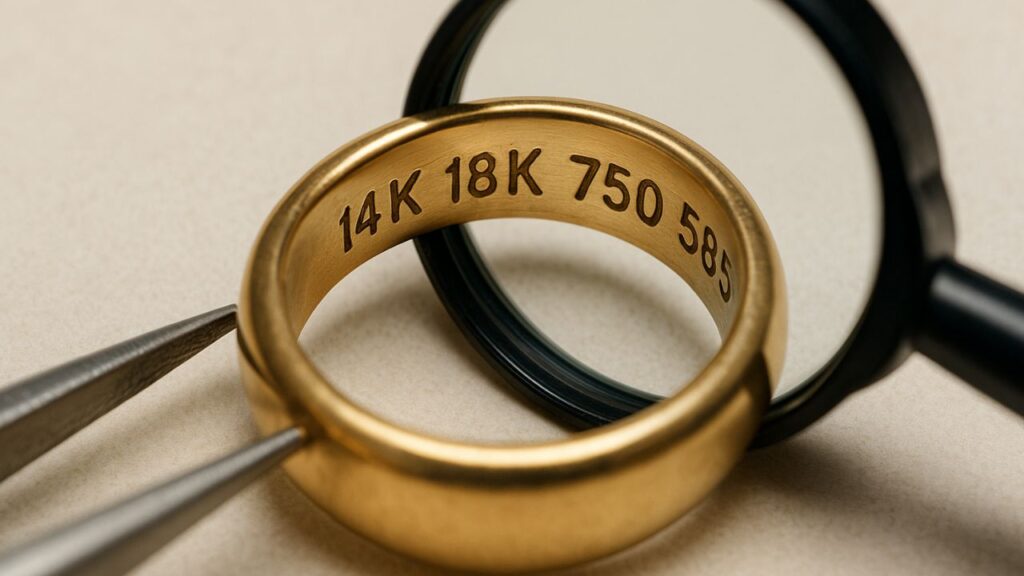
Most real gold rings have a small marking inside the band that shows the gold’s purity. These marks often include numbers like 10K, 14K, 18K, or 750, 585, and 417. These numbers indicate the percentage of gold content in the ring. If your ring has no markings, it doesn’t necessarily mean it’s fake, especially if it’s old or handmade, but you should verify it further with other methods. Keep in mind that some counterfeit rings may also carry fake stamps, so this step is just a starting point.
2. Magnet Test
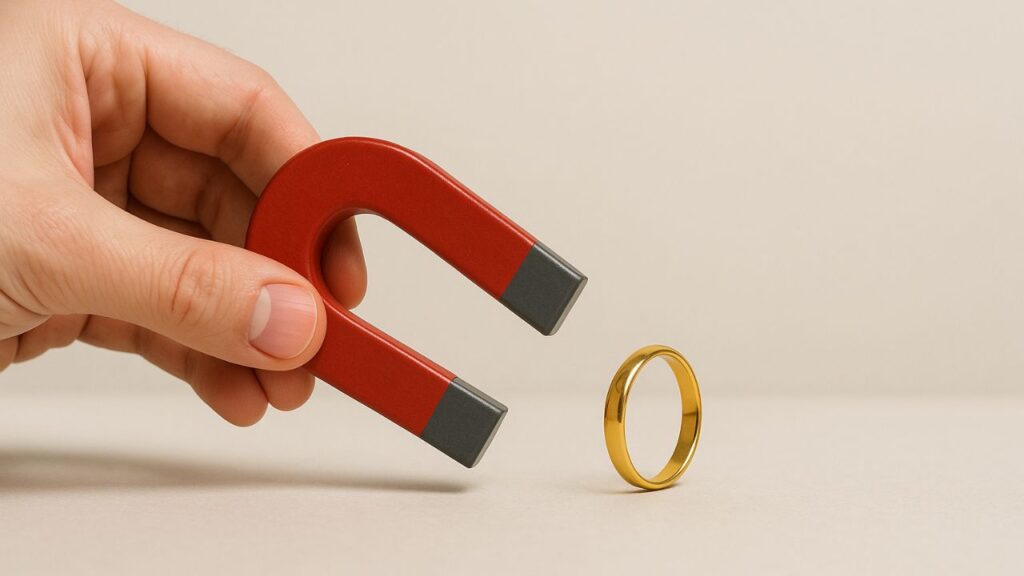
Gold is not magnetic, so it won’t stick to a magnet. To perform this test, hold a strong magnet close to your ring and see if it pulls. If the ring is attracted to the magnet, it likely contains other metals and isn’t pure gold. This method is simple and doesn’t damage your ring, but some gold-plated rings with magnetic metals underneath may still show slight attraction, so it should be used along with other tests.
3. Visual Inspection
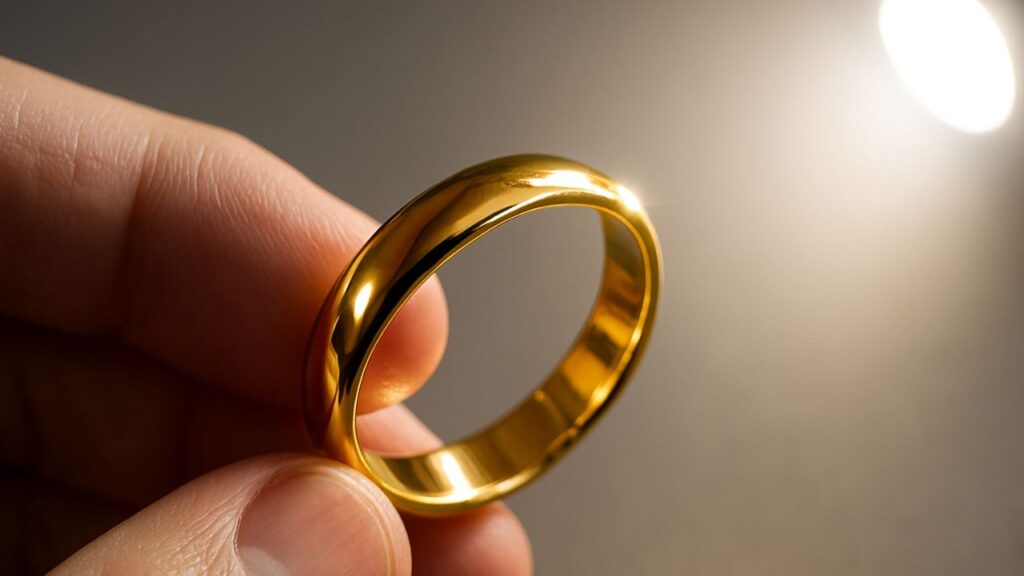
Carefully look at the ring under good light. Real gold has a uniform color and smooth surface, whether it’s yellow, white, or rose gold. If you notice fading, flaking, or a different color metal underneath, the ring might be gold-plated rather than solid gold. Also, look for signs of tarnish or rust—pure gold doesn’t tarnish, so any discoloration could suggest the presence of other metals.
4. Skin Test
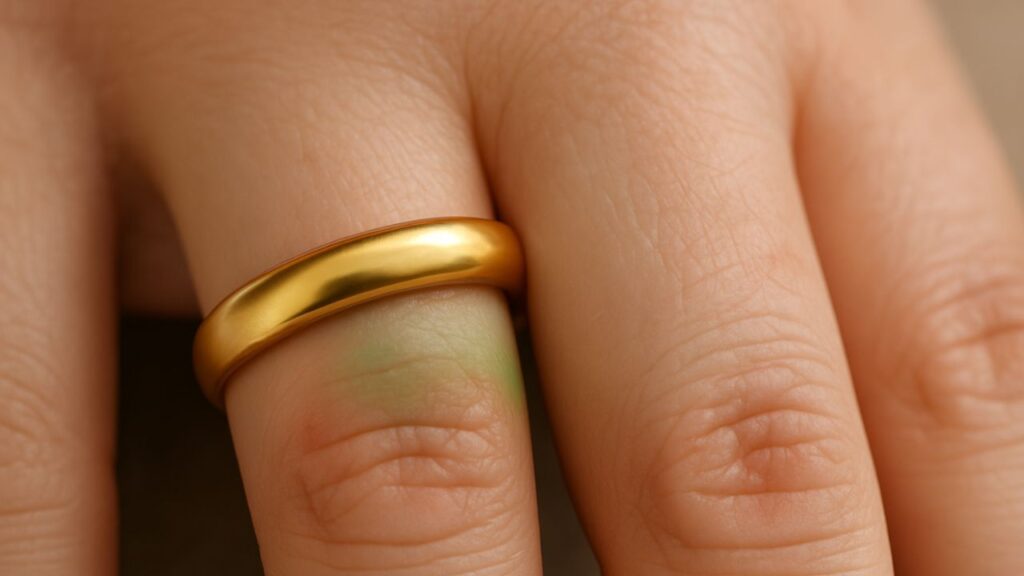
When you wear a real gold ring, it shouldn’t cause any skin reactions. If your finger turns green, black, or shows irritation, it’s a sign that the ring is made of other metals like copper or nickel. However, this test isn’t always accurate for everyone, as some people may still react to lower-karat gold that contains small amounts of allergenic metals.
5. Float Test
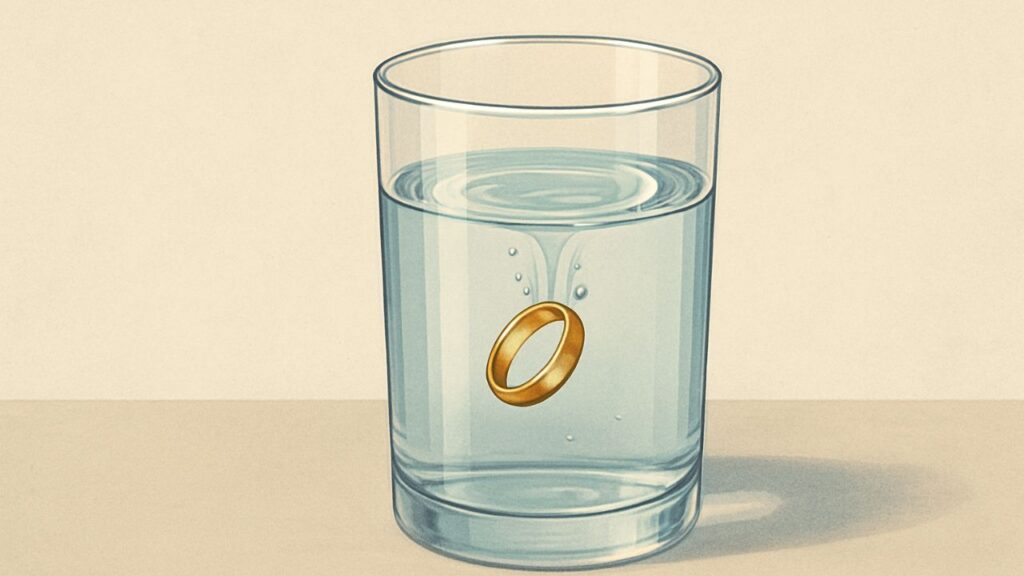
Real gold is very dense and will sink straight to the bottom when placed in water. To try this, simply drop your ring into a cup of water. If it sinks immediately and rests flat, it could be real gold. If it floats or sinks slowly, it may be made of lighter metals or be hollow inside. This method is quick and non-invasive but works best as a supplementary test.
6. Ceramic Test (Scratch Test)
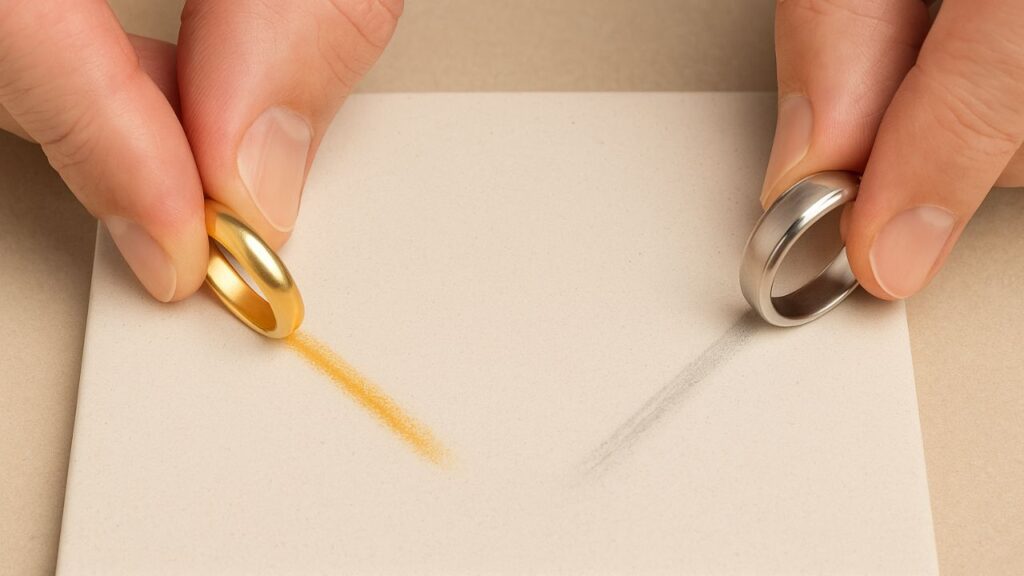
To do this test, use an unglazed ceramic tile and gently drag your ring across the surface. Real gold will leave a golden streak, while a fake ring will leave a black or grey mark. This method is effective but can slightly scratch the ring, so it’s best used on items where minor damage is not a concern.
7. Acid Test (Advanced)
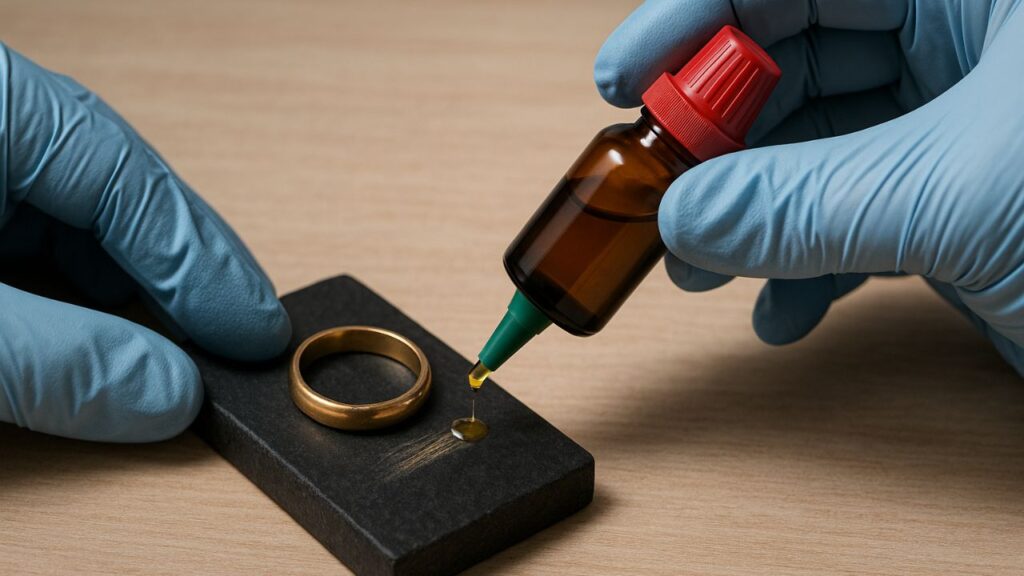
The acid test is a more precise way to check gold purity. It involves applying a drop of acid to a small scratch on the ring or a test stone rubbed with the ring. Different acids react to different karat levels, so if the metal dissolves, it’s not real gold or not the karat claimed. You can buy acid testing kits online, but be sure to follow all safety instructions and wear gloves.
8. Get a Professional Appraisal
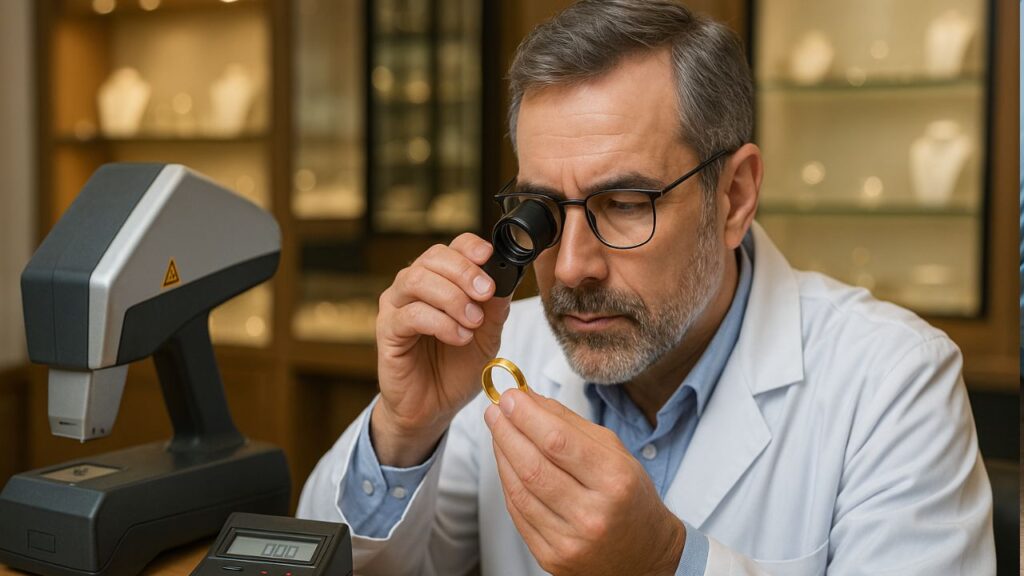
If you’re still unsure, the most accurate way to confirm gold authenticity is to take your ring to a certified jeweler or appraiser. They have access to advanced tools like electronic testers or X-ray fluorescence machines that can identify gold content without damaging the ring. A professional can also give you a certified valuation for insurance or resale purposes, making this the most reliable method available.
Gold Testing Methods Table
| Method | What It Tests For | Reliability |
| Hallmark Stamp | Karat or gold percentage | Medium |
| Magnet Test | Presence of base metals | Medium |
| Visual Inspection | Signs of wear or fading | Low |
| Skin Reaction | Reaction to non-gold metals | Low |
| Float Test | Density of the metal | Low |
| Ceramic Scratch | Metal streak color | Medium |
| Acid Test | Gold purity | High |
If you want to find your perfect ring size with confidence, try our user-friendly Ring Sizer Tool online. You can also download our Printable Ring Sizer and pair it with our Ring Size Chart for clear, at-home measurements that take the guesswork out of finding the right fit.

